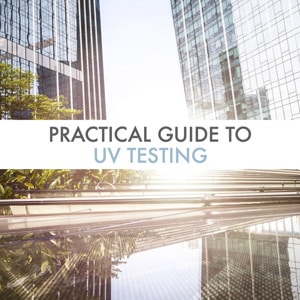ASTM D4214
Standard Test Methods for Evaluating the Degree of Chalking of Exterior Paint Films
Micom offers ASTM D4214 testing as part of its paint testing services. ASTM D4214—Standard test methods for evaluating the degree of chalking of exterior paint films—provides various test protocols which evaluate the degree of chalking of exterior paint films through the quantification of the reflectance of the residue collected by an adhesive tape or by the identification of the visual standard which represents adequately the characteristics of the residue collected on the surface of the sample. However, this present practice does not describe a conditioning procedure for the specimen
Evaluation of the rate of chalking of exterior paint films—use and factors to consider:
The purpose of ASTM D4214 is to characterize the degree of chalking of an exterior paint by using a standard of reference or by reflectance measurements. In other words, this method compares the amount of residue collected on the surface of the specimen, by a fingertip or a fabric, with the photographic reference standards present in this practice in order to fulfill its means. This test protocol describes four procedures which can characterize this property. Method A consists of comparing the quantity of chalk collected on the cloth used to strike, with a moderate pressure, the specimen to one of the visual standards provided by this practice. Method B consists of appraising the amount of residue gathered on a moist fingertip with a rating or a numbered scale. Method C relies on the use of a reflectometer in order to assess this attribute. More particularly, it employs ten masking tape bands in order to gather the chalk present on the sample and then utilize the reflectance range of the tape strips as a means to associate a chalk rating to the specimen. Method D utilizes the adhesive section of a tape as a means to collect the chalk present on the surface of the sample and then compare, under a diffused light and on a black velvet, the whiteness of the residue recovered on the tape with the photographic reference supplied by this method. Lastly, regardless of the test procedure employed, this method may be paired with an accelerated aging test as a means to evaluate the stability of the paint over the course of time.
The main factors that have to be considered when running this test are: the outside weather, the dryness of the surface of the specimen and the size of the sample.
Typical experimental parameters for ASTM D4214 testing:
The number of specimens and their sizes have to be specified. The acceptance criteria have to be established by the interested parties. Table 1 lists the main characteristics of each test procedure.
Table I: Main characteristics of test procedures described in this practice
| Test Method A (Cloth tape method) | Test Method B (Wet finger method) | Test Method C (Transparent tape method) | Test Method D (TNO type method) |
|
| Tool used to evaluate the sample | Black or white wool felt, velvet or velveteen | Moisten fingertip | Reflectometer, masking tape and two reflectance standards | Polyethylene tape |
| Means to assess the chalk rating | Photographic reference | Numbered scale or rating | Reflectance reading | Photographic reference |
For additional related test methods, please see coating testing.
Practical UV Testing Guide
Sunlight exposure can have harmful impacts on carbon-based
materials such as coatings, polymers, textiles, and many others.
Learn more about our in-laboratory UV testing process in this guide.


